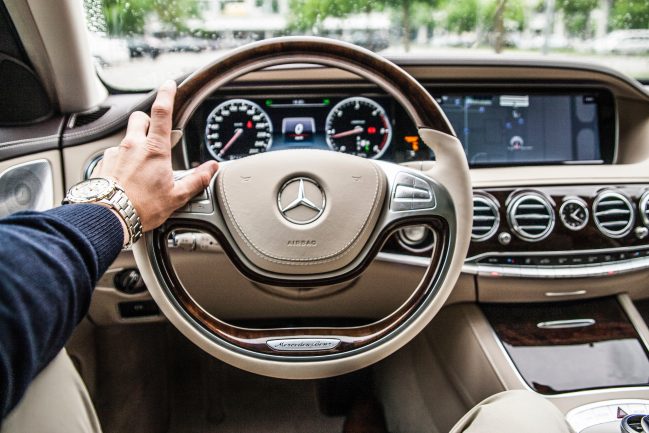I’m currently getting myself geared up [pun only slightly un-intentional] to sit my driving theory test for the third time. Annoyingly it’s not because I’ve already failed twice- quite the opposite as I sailed through both previous tests with flying colours. I sat the first test when I was 17 but after five disastrous practical driving tests threw the towel in for 10 years and by the time I picked up my driving again my theory had long since expired. I sat it for the second time just over two years ago at the same time as booking more lessons. Two more failed practical tests later and a decline in my mental and physical health saw me take another break and now I’m ready to pick things up again I realised that rather than having five years before the theory expires it’s actually only two…so yep, time to get practising that hazard perception again! For anyone else looking to sit their theory test (be it for the first, or third time) here are some answers to frequently asked questions in association with Pass ‘N’ Go – if your question isn’t answered in this post then do feel free to
drop them a line yourself.
(image)
Booking your theory test
How much does a theory test cost?
A car theory test costs £23. If you have a Safe Road User Award you can sit an abridged version which costs £18.
Can I book multiple theory tests?
In a word, no. You must rebook your theory test if you fail it the first time and this must be booked at least three working days ahead of the resit date.
You also have the option to change your booking in the following ways:
You can find an earlier date for your theory test.
You can move your theory test to a later date.
You can change the test centre where you would like to sit your theory test.
Can a theory test be done online?
No, it must be taken at a theory test centre
There are free mock tests of the multiple choice portion of the theory test on the GOV.UK site. This consists of 50 questions — the same number that will be provided in the actual driving theory test.
There’s also The Official DVSA Guide to Hazard Perception DVD-ROM for learner drivers to get to grips with hazard perception skills on their PC or Mac- I can’t emphasise enough how beneficial this is in order to prepare for your test- hazard perception is where most people end up failing.
What age can I sit a theory test?
You can sit the test as soon as you turn 17 years old.
If you receive or have applied for the enhanced rate of the mobility component of Personal Independence Payment (PIP) you can sit the theory test as soon as you turn 16 years old.
Theory test centres
Do theory test questions change?
The questions will change from one test to the next. However all of the questions are based on the following three books which make useful revision tools:
The Highway Code by the Department for Transport
Know Your Traffic Signs by the Department for Transport
The Official DVSA Guide to Driving — The Essential Skills by the Driver and Vehicle Standards Agency
How do theory tests work?
Each theory test consists of the following sections:
A set of 50 multiple-choice questions, some of which will be presented in a case study whereby a short story is shown and then five questions will be given based on this. A real-life situation that you could come across while driving will be detailed.
A hazard perception test consisting of 14 separate video clips.
At the end of the test you must score at least 43 out of 50 for the multiple-choice questions and 44 out of a possible 75 points for the hazard perception test and you must pass both sections of the test.
How long do theory tests take?
You have a maximum of 57 minutes to get through the 50 multiple-choice questions. Additional time can be requested if you have reading difficulties- see website for details.
Up to three minutes can be taken as a break between the multiple-choice portion of the test and the hazard perception test. There is no time limit as such for this part as this is based on how long it takes for all 14 video clips to be shown.
The hazard perception part of the theory test
This is probably the part most people have questions about!
What are hazard perception tests?
The hazard perception test is a video assessment which tests your effectiveness at spotting hazards on the road through a series of 14 video clips.
Each video clip consists of the following:
Everyday road scenes.
At least one ‘developing hazard’ — this is something that would cause a driver to take an action such as changing their speed or direction — though one clip will feature two developing hazards. Points are scored if you spot the developing hazards as soon as they begin to occur.
What is the hazard perception pass score?
You need to score at least 44 points out of a possible 75.
How does the hazard perception test scoring system work?
Each developing hazard within the hazard perception test earn up to five points. The sooner you click your computer mouse to indicate that you’ve seen the hazard is starting to develop the higher the score you will be.
Take note that you can’t lose points if you click your computer mouse and get the timing of the hazard developing wrong. However it’s important to note that no points will be scored for a developing hazard if you click your computer mouse continuously or in a manner that is seen as a pattern.
Once you’ve passed a theory test
Do theory tests expire?
As I found out, yes they do! When you pass your theory test you will receive a letter that contains your pass certificate number. This number is needed when you book and take your practical driving test but it only lasts for two years from the date you pass. Failing to pass your driving test within those two years and you will be required to pass your theory test again.
Where is the theory test pass certificate number?
The theory test pass certificate number will be recorded within a letter that you will receive at the test centre as soon as you pass your theory test. You must keep this number safe as it is required in order for you to both book and take your driving test.
I really hope you found this post helpful if you’re yet to sit your driving theory test. If you have any further questions, funny stories about driving tests or some hints and tips of your own then please do leave them in the comments!

![]()




